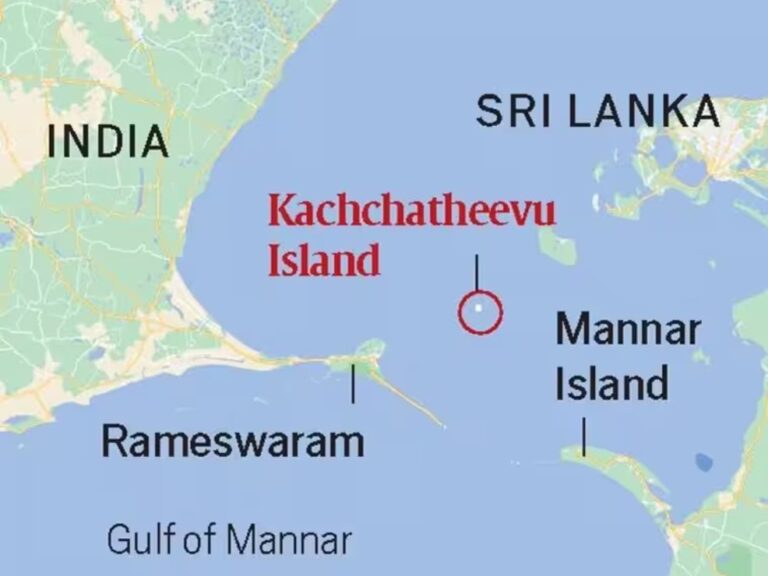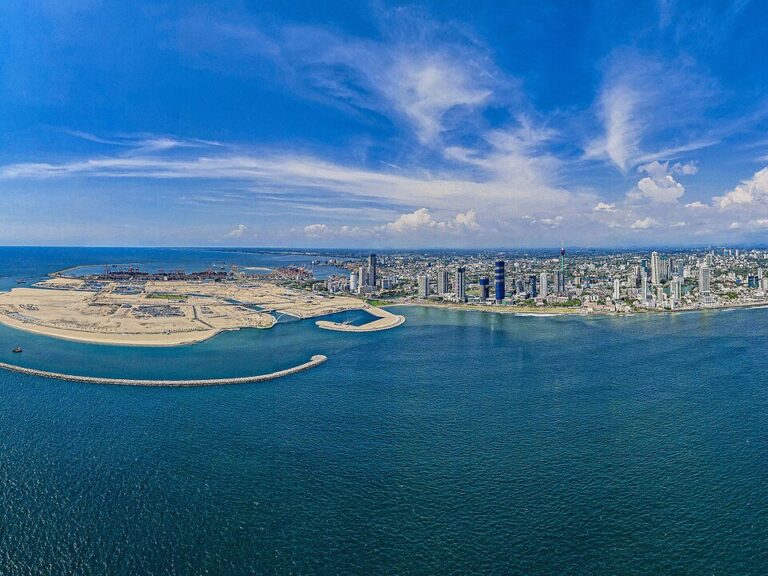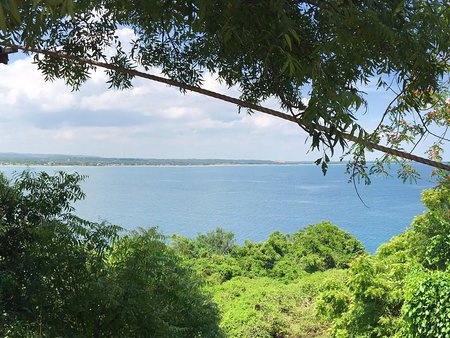From Saudization to Serendib: A Blueprint for Localizing Sri Lanka’s Resort Management Without Losing World-Class Standards

Introduction: Why Sri Lanka Must Learn from Saudization — Now
In 2011, I found myself in a bustling hotel lobby in Riyadh, watching a young Saudi trainee—barely in his twenties—welcome a delegation of European investors. His English was crisp, his confidence unmistakable, and his cultural pride woven seamlessly into his service. Just a few years earlier, such a scene would have been rare. The luxury hospitality sector in Saudi Arabia had been dominated by expatriates, particularly in senior and guest-facing roles. But that day, I was witnessing the visible results of Saudization—a nationwide talent localization policy designed to equip and place Saudi nationals in jobs previously held by foreign workers.
Fast forward to Sri Lanka today. As our tourism sector stands at a pivotal crossroads—with over 200,000 direct and indirect hospitality jobs at stake—there’s an urgent question we must ask: Can we localize resort management in a way that empowers Sri Lankan talent, reduces dependency on foreign hires, and still maintains the exacting standards global travellers expect?
The answer is not a simple yes or no. It lies in building our own version of Saudization—one adapted to our cultural DNA, service traditions, and economic realities. A model that trains, retains, and celebrates Sri Lankan professionals in leadership roles across our most prized resorts. And crucially, a model that avoids the pitfalls of rushed localization, which can compromise service quality if not planned with surgical precision.
Background: Saudization and Its Hospitality Ripple Effect
Saudization—officially known as Nitaqat—was introduced in 2011 as part of the Kingdom of Saudi Arabia’s broader economic diversification strategy. Its purpose was straightforward yet ambitious: reduce unemployment among Saudi citizens by mandating a minimum percentage of local employees in private-sector companies, including the hospitality industry.
In luxury resorts, this meant shifting the staffing ratio—often 80% expatriates and 20% locals—to a more balanced workforce within a decade. The transformation wasn’t without challenges: language gaps, skill mismatches, and the urgent need for soft-skills training were major hurdles. But the benefits were equally clear. By 2020, the number of Saudi nationals in front-desk, concierge, F&B management, and guest relations roles had increased by more than 40%.
For Sri Lanka, the parallels are striking. Our high-end resorts—particularly those catering to luxury and wellness tourism—often rely on foreign general managers, executive chefs, and wellness directors. While their expertise is invaluable, it leaves a talent gap among local professionals who aspire to these leadership positions. The risk? A long-term dependency that not only drains foreign exchange through salaries but also slows the growth of our domestic talent pipeline
Case Studies: Lessons for Sri Lanka from Home and Abroad
Case Study 1 – Ritz-Carlton, Riyadh, Saudi Arabia
When Ritz-Carlton Riyadh began implementing Saudization, 40% of its managerial and guest-facing roles were held by Saudi nationals within five years. The transition was guided by dual mentorship, where each Saudi employee shadowed a senior expatriate for a period of 12–24 months.
Key Outcomes:
- Guest satisfaction scores remained above 90%, despite the workforce shift.
- Local employees gained confidence and a clear career trajectory.
- Staff retention improved by 22%, as Saudis saw tangible growth opportunities.
Sri Lankan Lesson: Mentorship paired with structured training ensures that localization enhances rather than compromises service quality.
Case Study 2 – Shangri-La Hambantota, Sri Lanka
Shangri-La invested in an on-site training academy to groom locals for front-desk, F&B, and concierge roles. Trainees underwent 12 months of comprehensive programs covering service etiquette, English and German language skills, guest psychology, and problem-solving.
Outcomes:
- 95% of trainees were retained for at least three years.
- Guest feedback highlighted improved personalization and cultural authenticity.
- Internal promotions increased, reducing recruitment costs by 28%.
Lesson: Investing in pre-deployment training boosts both employee confidence and guest experience.
Case Study 3 – Al Faisaliah Hotel, Riyadh, Saudi Arabia
This luxury property faced initial skepticism: Could local staff manage high-volume, international business travelers without service lapses? The hotel introduced cultural harmony workshops, blending Saudi cultural expectations with global hospitality standards.
Outcomes:
- Early dips in guest satisfaction (7–10%) were quickly reversed through targeted coaching.
- Promotion timelines were clearly communicated, reducing turnover from 28% to 9% within three years.
Sri Lankan Lesson: Cultural alignment is as important as technical training. Guests appreciate staff who combine professionalism with authentic local warmth.
Case Study 4 – Cinnamon Bentota Beach, Sri Lanka
In 2023, Cinnamon Bentota piloted a program to recruit front-office staff from rural districts, providing six months of intensive training. Modules included:
- English and French conversational skills
- Customer service etiquette
- Digital reservation and billing systems
- F&B knowledge and table service standards
Outcomes:
- Employee retention improved by 27%.
- TripAdvisor and Google reviews cited “friendly, knowledgeable, and authentic staff.”
- The resort strengthened community ties by employing locals near the property.
Lesson: Early-stage, structured training ensures locals are fully prepared to meet international guest expectations.
Case Study 5 – Jumeirah Group, Dubai
Jumeirah implemented a rotational cross-departmental program, exposing employees to housekeeping, F&B, front-office, and management functions over three months each. This created versatile leaders who understood the full guest experience.
Sri Lankan Application: Resorts in Sri Lanka could adopt similar rotations, particularly in seasonal regions like Arugam Bay or Mirissa, producing managers who can respond to peak-period challenges effectively.
Case Study 6 – Uga Escapes, Sri Lanka
Uga Escapes focuses on community-based recruitment, hiring locals from villages surrounding each resort. The company provides housing, transportation, language classes, and career planning.
Outcomes:
- Staff attrition fell below 10%, well below the national industry average of 25–30%.
- Local ownership increased—staff felt a personal connection to the resort’s success.
- Guests experienced authentic interactions with local culture seamlessly woven into service delivery.
Lesson: Recruiting from nearby communities builds loyalty, reduces costs, and enhances the guest experience with authentic Sri Lankan cultural touchpoints.
Case Study 7 – Heritance Kandalama, Sri Lanka
Heritance Kandalama integrated local artisans, farmers, and wellness practitioners into its operations, sourcing food, décor, and spa products directly from nearby communities.
Outcomes:
- Annual import costs reduced by USD 250,000.
- Over 300 local families received steady income.
- Guests reported higher satisfaction due to the sense of authenticity and cultural immersion.
Sri Lankan Lesson: Localization isn’t just about employment—it includes supply chains, cultural representation, and authentic guest experiences.
Key Takeaways from Case Studies
- Mentorship is Critical: Pairing local staff with experienced expats ensures smooth knowledge transfer.
- Cultural Integration Matters: Guests notice when staff combine professional skills with authentic local warmth.
- Training First, Deployment Second: Pre-deployment training reduces errors, improves confidence, and strengthens guest satisfaction.
- Community Inclusion: Sourcing staff and materials locally creates a positive social and economic impact.
- Career Path Transparency: Staff retention improves when employees see clear growth opportunities.
Talent Development Blueprint: Localizing Sri Lanka’s Resort Management
Sri Lanka can adopt a phased, structured approach to developing its homegrown resort management talent. Drawing from Saudization and successful Sri Lankan examples, the following seven pillars form a comprehensive blueprint:
1. National Hospitality Certification Program
A standardized national curriculum ensures consistent quality across resorts. Proposed modules include:
- Front Office & Guest Relations: Check-in/out procedures, digital reservation management, guest problem-solving.
- Food & Beverage Service: Table service techniques, wine pairing basics, menu knowledge, dietary awareness.
- Housekeeping & Maintenance: Cleanliness standards, preventive maintenance, eco-friendly operations.
- Cultural Awareness & Language: English proficiency, French, German, or Mandarin optional; training in cross-cultural guest etiquette.
- Luxury Service & Personalization: Anticipating guest needs, VIP guest handling, experience personalization.
- Digital Tools & Revenue Management: PMS systems, booking analytics, yield optimization.
Duration: 12–18 months, blending classroom, simulation labs, and on-the-job training.
Outcome: Graduates are competent in both operational and managerial aspects, ready to step into supervisory roles.
2. Mentorship & Shadowing Programs
- Pair each trainee with an experienced international manager for 12–24 months.
- Rotational exposure across departments—front desk, F&B, housekeeping, spa, and wellness—to cultivate holistic understanding.
- Monthly evaluations with structured feedback ensure learning is tracked and measurable.
Outcome: Confidence, skill retention, and readiness for leadership positions.
3. Shared Regional Training Hubs
- Establish three regional academies (South: Galle, Central: Kandy, North-East: Jaffna) for centralized, cost-effective training.
- Facilities include simulation rooms, mock front desks, kitchens, and housekeeping labs.
- Partner with resorts in clusters to share resources and trainers.
Outcome: Economies of scale, standardized training, and stronger inter-resort collaboration.
4. Government & Industry Incentives
- Tax breaks, subsidies, and recognition awards for resorts achieving 60–80% local management staff.
- Grants for innovation in training modules, technology adoption, and staff welfare.
Outcome: Encourages resorts to invest in long-term workforce development.
5. Rotational & Seasonal Staffing Models
- Rotate staff through peak and off-peak seasons to prevent burnout and retain knowledge.
- Provide short-term placements in international partner resorts for exposure to global practices.
Outcome: Adaptable managers, reduced attrition, and readiness for fluctuating demand.
6. Community-Based Recruitment & Supplier Integration
- Source staff from neighboring villages, provide transport, housing, and wellness programs.
- Integrate local artisans, chefs, and wellness practitioners into resort offerings.
Outcome: Strengthens local economy, authentic guest experiences, and sustainable operations.
7. Career Pathway Transparency & Promotion Framework
- Clearly outline requirements for entry-level to supervisory and managerial positions.
- Include skill milestones, performance metrics, and leadership readiness evaluations.
- Encourage higher education or certifications abroad for specialized roles (e.g., revenue management, spa operations).
Outcome: Retains talent, reduces brain drain, and builds a professional workforce aligned with global standards.
Implementation Roadmap
Phase 1 (Year 1–2) – Foundation Building
- Establish training hubs, curriculum design, mentorship pairing.
- Recruit first batch of 200–300 trainees.
Phase 2 (Year 3–5) – Gradual Localization
- Localize 40–60% of mid-level management roles.
- Monitor guest satisfaction, retention rates, and service quality.
- Provide international exposure for high-potential staff.
Phase 3 (Year 6–8) – Leadership Consolidation
- Achieve 70–80% localization in management roles.
- Retain expatriates in specialized, advisory, or mentorship roles only.
- Evaluate economic impact, career progression, and staff satisfaction.
Phase 4 (Year 9–10) – Sustainable Excellence
- Continuous program review, update curriculum to meet global trends.
- Expand to other tourism sectors: eco-lodges, wellness resorts, and boutique properties.
Quick Facts Sidebar
- Projected Employment Impact: 100,000+ new managerial and supervisory roles by 2035.
- Training Duration: 12–18 months for frontline staff; 24–36 months for leadership track.
- Expected Retention: 80% of trainees expected to stay 5+ years with proper mentorship and career growth.
- Economic Upside: Reduced reliance on expatriates could save USD 50–80 million annually in salaries.
Key Lessons Sidebar
- Mentorship + structured training = confident, competent managers.
- Early community integration strengthens loyalty and operational resilience.
- Clear career paths prevent attrition and brain drain.
- Rotational exposure develops versatile leaders.
- Cultural authenticity boosts guest satisfaction and brand differentiation.
Economic Projections & Impact
Implementing a Sri Lankan-style “Saudization” in resort management is not just a workforce initiative—it’s an economic game-changer. Based on current tourism trends and luxury resort growth:
- Tourism Arrivals: Projected 4 million by 2030, with high-spending luxury travelers contributing the largest per-guest revenue.
- Employment Potential: Over 100,000 new managerial and supervisory roles in resorts alone by 2035.
- Cost Savings: Reduced reliance on expatriates could save USD 50–80 million annually in salaries.
- Community Growth: Integration of local suppliers, artisans, and wellness providers can generate USD 15–20 million in additional local economic activity annually.
- Guest Satisfaction: Personalized, culturally authentic service is projected to increase repeat visits by 15–20%.
This demonstrates that localization is both a social and financial strategy, strengthening human capital while improving economic resilience.
Risks & Mitigation
- Service Quality Dip: Mitigation: Phased role replacement, mentorship programs, and regular quality audits.
- Staff Resistance or Attrition: Mitigation: Transparent promotion pathways, competitive pay, and international exposure opportunities.
- Brain Drain to Other Countries: Mitigation: Offer long-term career development, housing, and community-based benefits.
- Cultural Misalignment: Mitigation: Continuous cultural competency training and guest feedback loops.
- Operational Cost Challenges: Mitigation: Shared regional training hubs and government incentive programs to offset initial investment.
Conclusion: From Desert Lessons to Island Dreams
The Saudization experience in Saudi Arabia proves that localization without compromising service standards is achievable. Sri Lanka, with its rich human capital, cultural diversity, and thriving tourism sector, can replicate and adapt these lessons.
By:
- Establishing robust training programs
- Pairing new talent with mentors
- Creating clear career pathways
- Integrating community and cultural authenticity
Sri Lanka can develop a world-class, locally empowered resort management workforce. The next decade of tourism should not only focus on increasing visitor numbers but on elevating the quality of human capital, ensuring every guest interaction reflects Sri Lanka’s warmth, professionalism, and heritage.
In doing so, Sri Lanka will:
- Reduce dependency on expatriates
- Strengthen local economies and communities
- Build a sustainable pipeline of leaders capable of managing the country’s luxury resort sector for decades to come
The result is a tourism model that empowers locals, satisfies guests, and secures Sri Lanka’s place as a globally respected luxury destination.
Disclaimer
This article has been authored and published in good faith by Dr. Dharshana Weerakoon, DBA (USA), based on publicly available data from cited national and international sources, decades of professional experience across multiple continents, and ongoing industry insight. It is intended solely for educational, journalistic, and public awareness purposes to stimulate discussion on sustainable tourism models. The author accepts no responsibility for any misinterpretation, adaptation, or misuse of the content. Views expressed are entirely personal and analytical, and do not constitute legal, financial, or investment advice. This article and the proposed model are designed to comply fully with Sri Lankan law, including the Intellectual Property Act No. 52 of 1979, the ICCPR Act No. 56 of 2007, and relevant data privacy and ethical standards. ✍ Authored independently and organically through lived professional expertise—not AI-generated.
Further Reading: https://dharshanaweerakoon.com/bodhi-trees-to-blockchain/






